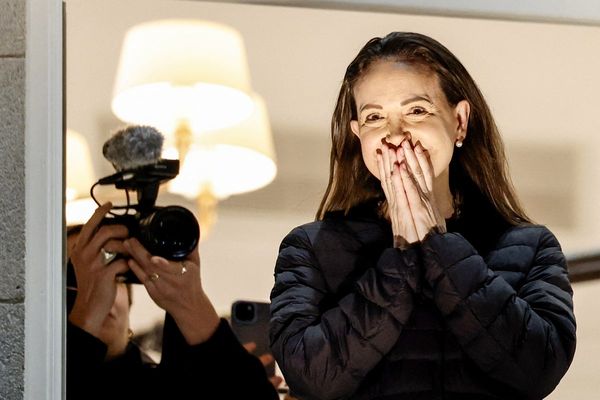
When the Nigerian art collector, curator and dealer Kayode Adegbola was given a pair of Yorùbá twin statuettes – ère ìbejì – in 2022 as a reward for a successful art deal, it was the start of a new passion. While he had seen a few ìbejì carvings in his uncle’s collection of African traditional art, the gift resonated with Adegbola.
“I have always been conscious of ìbejì but I will say my passionate research was definitely a 2022 moment.
“I’ve been collecting them since then,” says Adegbola, who trained as a lawyer in London. “I buy back from foreign auctions and also whenever I find anybody in Nigeria who has them and wants to give them away or get rid of them, I take from them.”
The ère ìbejì are a material embodiment of a unique spiritual, cultural and artistic tradition among Yorùbá people, who have one of the world’s highest birth rates of twins and are more than four times more likely to have them than Europeans.
The average birthrate of the Yorùbá town of Igbo-Ora in Nigeria’s Oyo state, is 45 twins per 1,000 births, compared with a global average of about 12 per 1,000.
“In Yorùbá culture, twins occupy a position of profound spiritual and social importance,” says Kehinde Adewumi, a researcher at Durban University of Technology who is also a twin. has studied ère ìbejì.
“The Yorùbá are reputed to have one of the highest twinning rates in the world, and this phenomenon is interpreted not merely as a biological occurrence but as a sign of divine blessing.
“Twins are regarded as bearers of good fortune, prosperity and protection for their families and communities,” he says.
“When a twin passes away, carved wooden figures [ère ìbejì] are created to house the spirit of the departed child, ensuring continued veneration and safeguarding the wellbeing of the living twin and the wider family.”
The figures, which are also carved for living twins, were taken care of like real babies: bathed, oiled, breastfed, clothed (in the same dresses as the twins, if alive), adorned with beads, sung and prayed to, and carried on women’s backs.
They were carved with stylised features – with bulgy eyes, their cheeks often scarified, and given adult features such as genitalia and breasts. Most importantly, their heads are big and hugely coiffed to symbolise each twin’s spirit, creation and destiny, or orí.
This tradition, however, has been almost entirely lost. The ìbejì figures are scattered in foreign museums all over the world, with the most recent dating from the mid-1950s.
So, in February 2023, Adegbola launched the Ìbejì Project to revitalise the lived history of the tradition.
“The Ìbejì Project is an educational and advocacy platform that introduces traditional art to new audiences,” he says. “Twinship is universal, but the Yorùbá response – carving ère ìbejì as vessels for spirits – is unique and must be kept alive as a living conversation rather than frozen in museums abroad.”
In October 2024, he curated an ìbejì-centred show in collaboration with London’s Tafeta Gallery.
The project involves collecting original ère ìbejì, exhibiting them and juxtaposing them with curated contemporary art that continues the tradition by exploring the themes of twinness. “I am drawn to artists who seriously engage with what twinship represents: duality, absence, companionship, continuity,” Adegbola says.
He believes curating contemporary art works – such as sculptures, installations, paintings or photography – that share artistic and thematic similarities with ère ìbejì resituates the ancient tradition in the present. “[The Ìbejì Project] is a space where contemporary artists create their own responses, extending the dialogue into the present,” he says.
“I am most satisfied when people who once dismissed traditional art start to collect it because of the Ìbejì Project,” says Adegbola.
Next, he hopes to publish a book “to make the ìbejì tradition accessible to scholars and the wider public”.
He says: “Though rooted in Yorùbá culture, the Ìbejì Project is for the world. Just as we study other cultures, others should study ours with equal seriousness.
“My hope is that they will no longer be seen as museum curiosities, but as part of a living, breathing cultural heritage.”







